I woke at 5 a.m., drew the drapes to my cabin balcony, and gasped. Overnight, we had sailed up the west side of the Weddell peninsula to Paradise Harbour, Antarctica. Named by ancient whalers for its protected anchorage, the cove could not have had a more appropriate moniker. The sea was a vast sheet of polished silver. In the ethereal dawn light, it reflected mirror images of jagged black mountains jutting from snow-carpeted flanks. Intermittent patches of sea ice drifted by, glistening pearls cast upon the water. Moments later, a fiery sun crested the mountains, burst through dull grey clouds, and turned the sky to cerulean. The sea deepened to the bluest blue I have ever seen, an indescribable shade hovering somewhere between ultramarine and lapis lazuli. This was not the kind of weather I had expected in Antarctica.
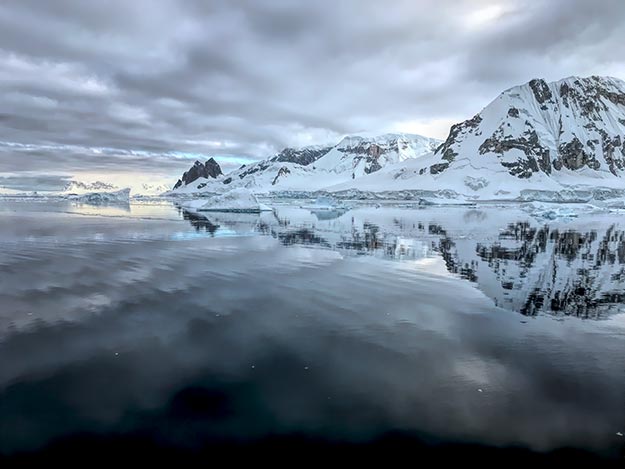
After a carb-laden breakfast, designed to provide extra energy against the polar cold, I struggled into cumbersome layers of protective clothing. Bundled up like the Abominable Snowman, I waddled down the gangway, gingerly made my way down the ship’s metal stairway, and stepped into a rubber Zodiac. Ten guests, one captain, and one guide, we motored away from the ship and into a sea littered with chunks of sea ice. The nose of our boat nudged aside pieces gigantic and tiny, ranging from brilliant white to deep blue, transparent to opaque.
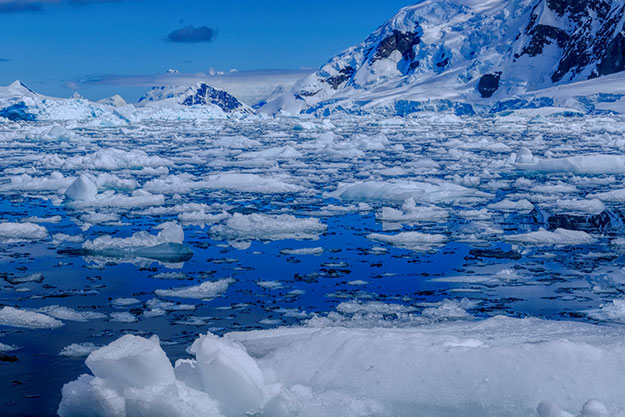
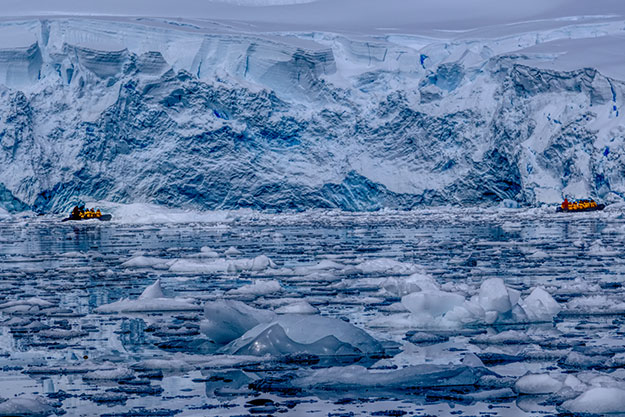
Our captain slowed and dragged a giant icicle-shaped piece of ice into the boat. “For cocktails tonight,” he proclaimed. He wasn’t kidding. This sea ice was from calving glaciers that had been formed thousands of years ago, long before there was any pollution. The crew regularly chops up floating sea ice for use in the ship’s lounge. Only later did did I learn this abundance of sea ice is not a particularly good sign. According to AntarcticGlaciers.org, “climate change has led to a rapid glaciological response, with 87% of glaciers around the Antarctic Peninsula now receding, and many glaciers thinning and accelerating.” Barely a month after my expedition concluded, an iceberg the size of Malta broke off the Pine Island glacier in Antarctica. Recent scientific models predict that Antarctica’s melting ice could cause sea levels to rise nearly two feet by 2100.
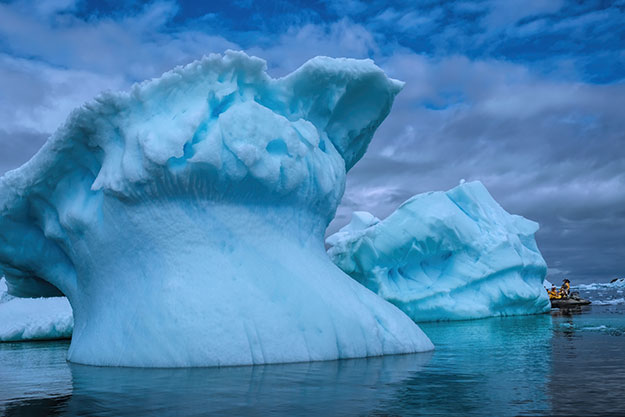
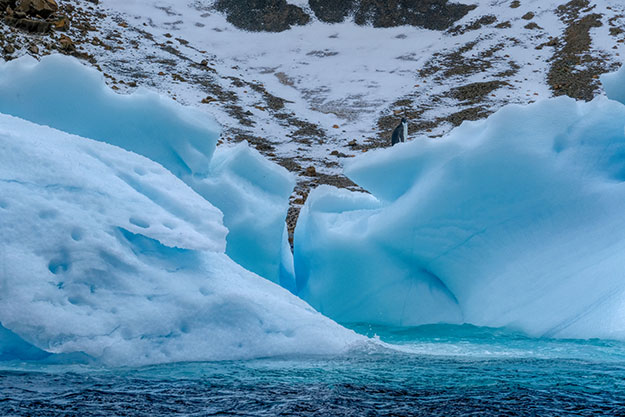
We cruised into an ice-free bay and nosed onto the rocks at the Argentinian Research Station Almirante Brown, one of three continental landings we would make during my 11-day cruise. Since it was early in the summer, none of the seasonal researchers had arrived. We had the place all to ourselves. I heaved my body over the side of the Zodiac, praying that my knee-high rubber galoshes would be high enough to keep out the frigid, sloshing water. They were – barely. A combination of rocks and crudely poured concrete steps led up to the rock bluff upon which the research station perched.
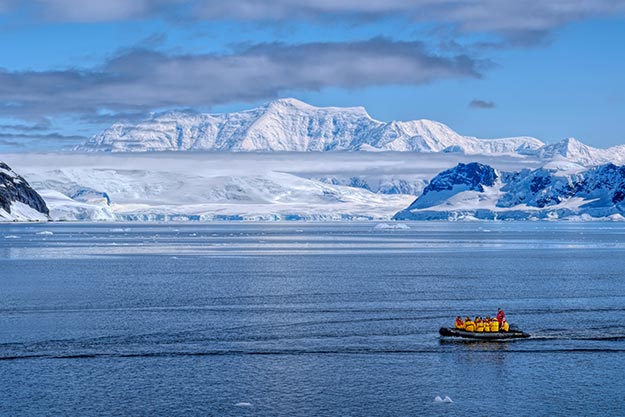
Some of my cruise mates continued up an icy trail. It led to an exposed knob of rock behind the station, which promised spectacular views over the harbour. I contented myself with a stroll around the station, where a colony of Gentoo Penguins were frolicking in the snow. The views at my level were stunning enough. On the opposite side of the placid bay, a snow covered massif was illuminated against a clear blue sky. I was so spellbound that I didn’t hear one of the guides approaching. I jumped when he spoke. “You’re lucky,” he said. “I’ve been a guide in Antarctica for five years and this is only the second time I’ve seen that mountain. It’s the highest one in this part of the continent.”
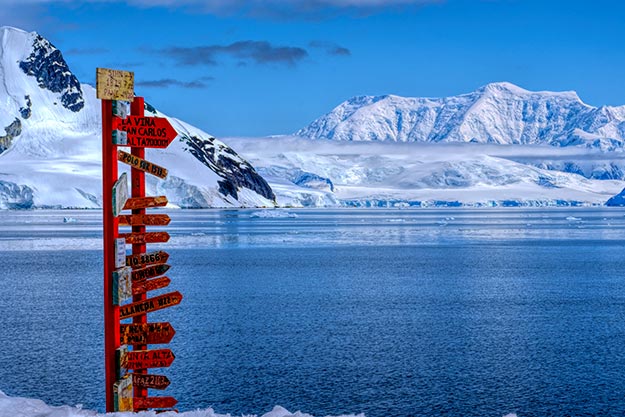
My first reaction was delight that the weather had been so sunny and clear for much of my visit. But again, I later learned that this was not a particularly good thing. Five weeks after my expedition, the Antarctic peninsula experienced the highest heat wave ever recorded. Between January 23-26, 2020, the temperature had soared to an unprecedented 48.6 degrees Fahrenheit. By February, temperatures up to 65 degrees Fahrenheit were recorded on the peninsula’s northern tip – the hottest ever for Antarctica. As a result, during just nine days in February, satellite images show that 20% of the snow pack in the area had melted. Scientists tell us that ice sheets can melt quickly, but building them back up again takes thousands and thousands of years.
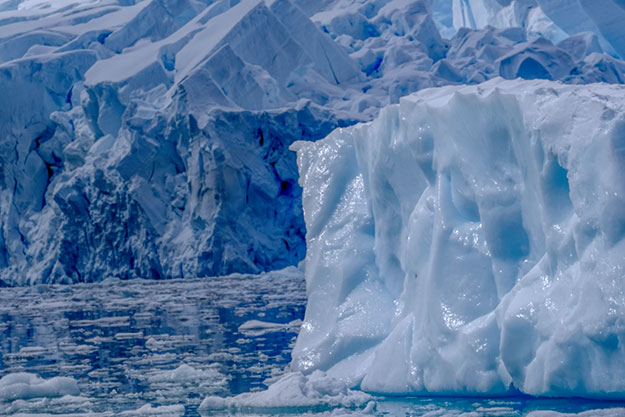
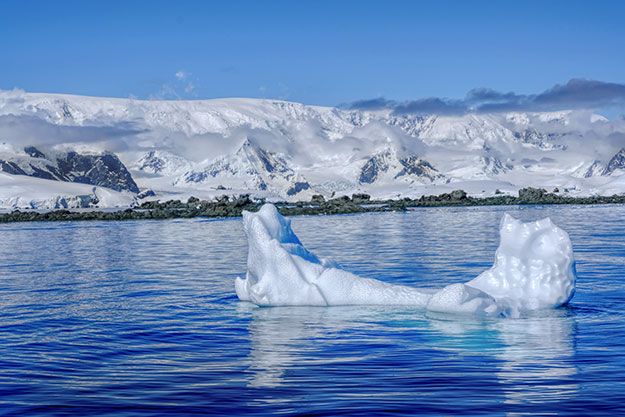
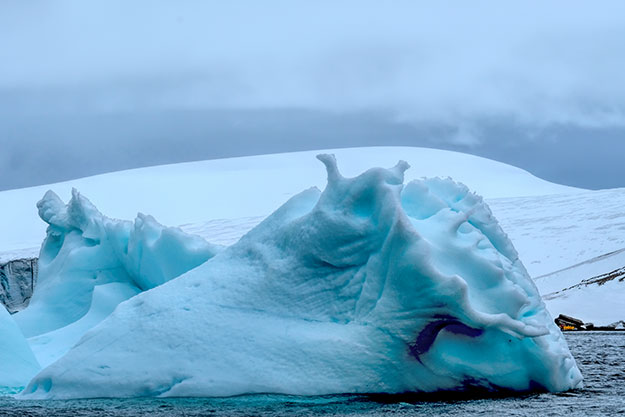
Another Zodiac expedition took us around Cierva Cove. The attraction here was icebergs. Cute small ones and massive ones. Floating ice sculptures with perfectly circular holes bored through the middle. Icebergs with rows and rows of icicles hanging from their faces. Towering pinnacles of ice and improbably giant blocks where penguins clustered – how they had gotten to the top defied imagination. It was like stepping into an alternate universe, a fairyland populated with surreal but exquisitely beautiful shapes and hues. I didn’t want our expedition to end that afternoon. We pleaded with our captain to stay longer and he relented, allowing us an additional 20 minutes of cruising.
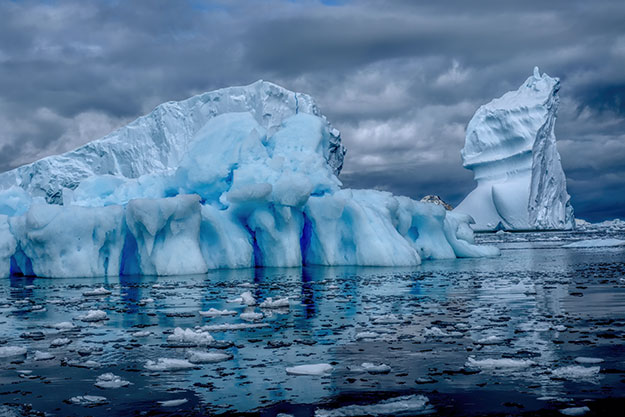
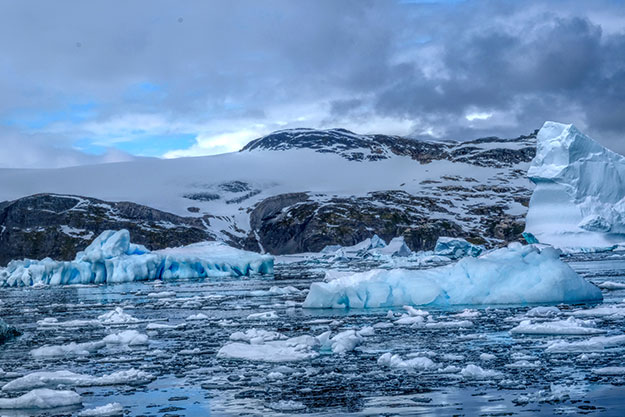

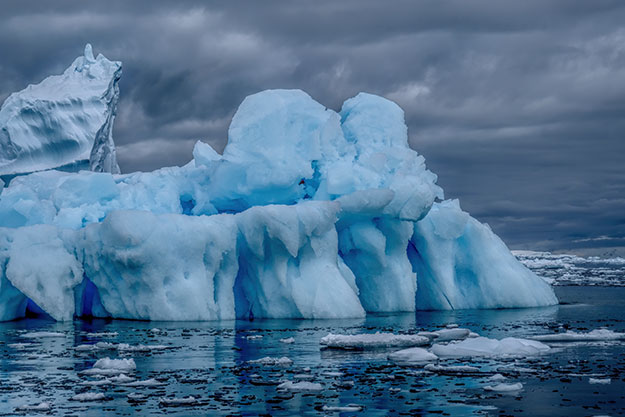

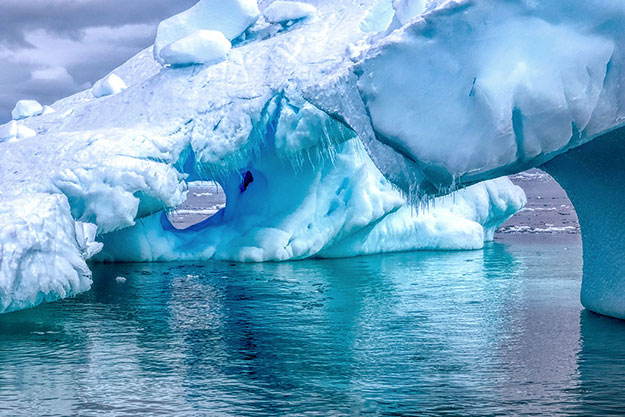

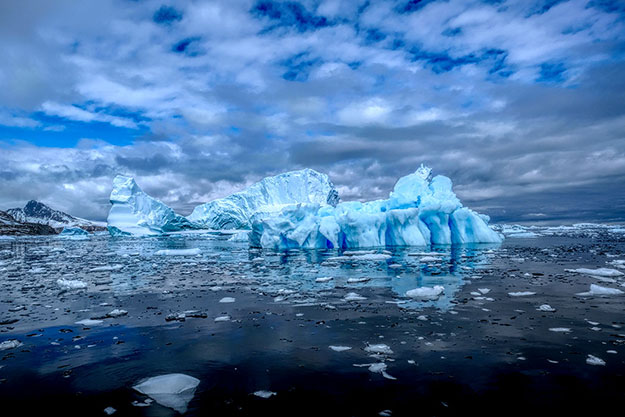
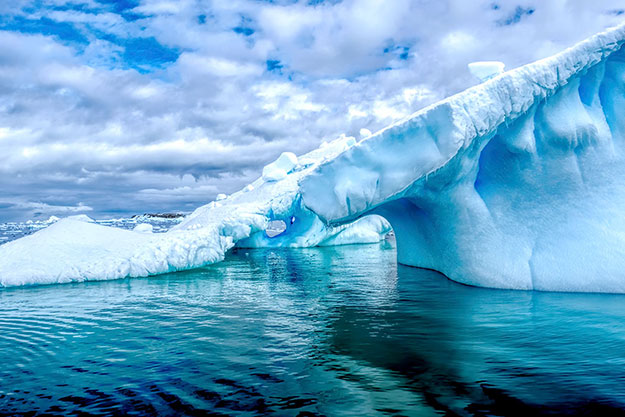
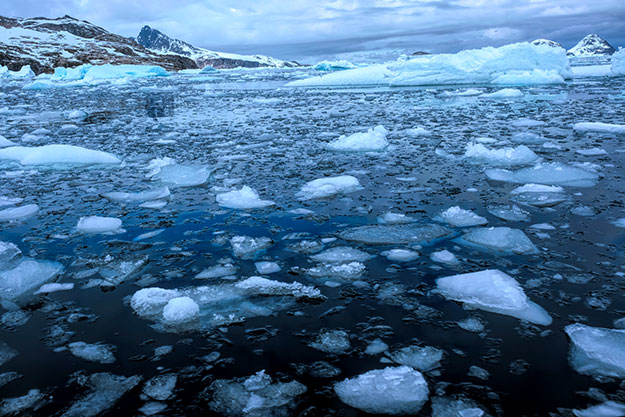
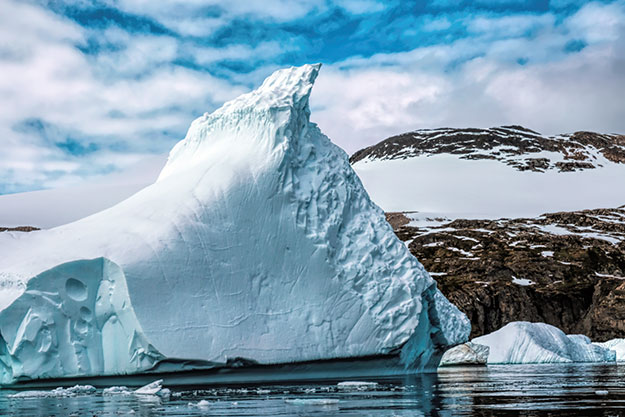

Finally, he could delay no longer and turned toward the ship. Directly in front of us floated an iceberg like nothing we had seen thus far. It resembled an overturned ship’s hull, oval in shape with a humped center and ends declining to the water. Rivulets of water ran down parallel gouges that might have been carved by some mythical, behemoth ice queen. Its entire surface sparkled, like the fire within diamonds. “It’s just overturned,” our captain explained. Over time, the portion of an iceberg that sits below the surface melts. When the upper portion becomes too top heavy, the berg turns over in one massive, splashing display.

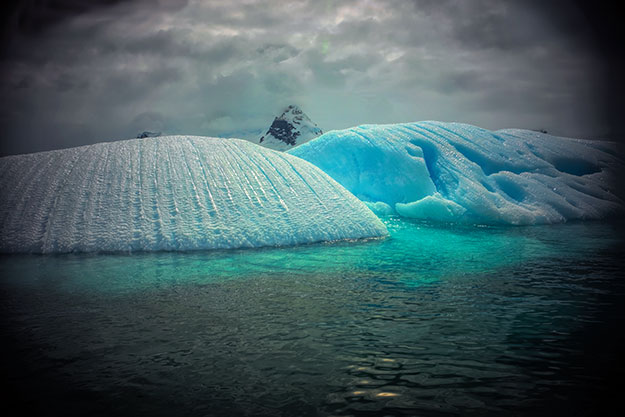
Even our captain seemed awestruck. He turned off the motor and we glided toward the berg. In the Antarctic stillness, the hissing and popping sounds emanating from the glacier were thunderous. Ancient air was escaping from the melting ice. Air that had been trapped within eons ago, before dinosaurs roamed the earth. Air that hailed from a time before humans laid their blight upon the land. I wondered, if we could get close enough, would that air smell different? Taste different? Of course, we couldn’t get close enough. Even a recently overturned iceberg can shift again and create a giant wave that could swamp our small craft.
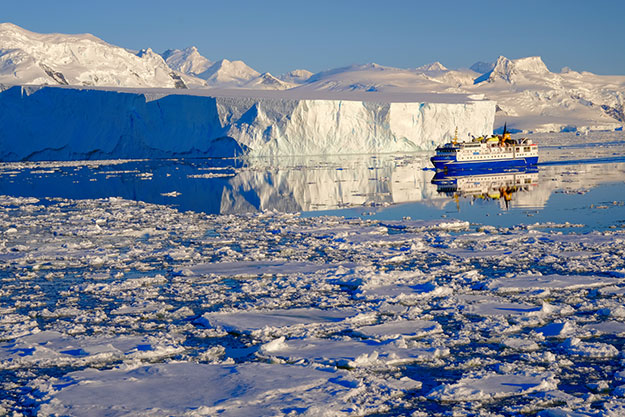
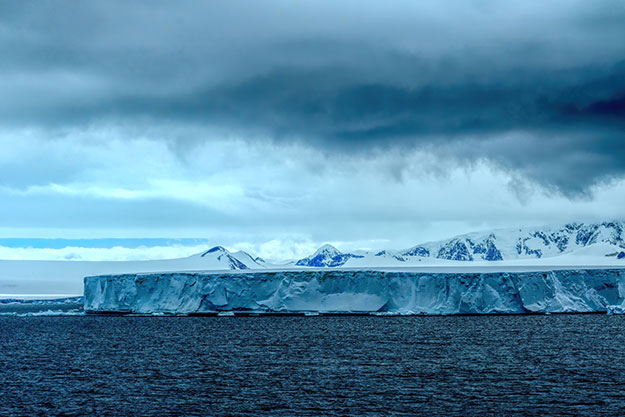
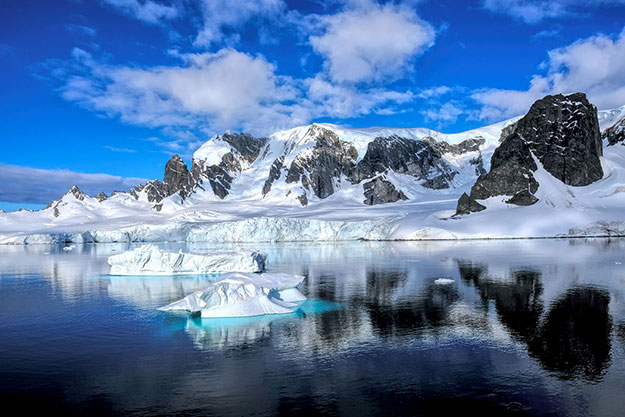
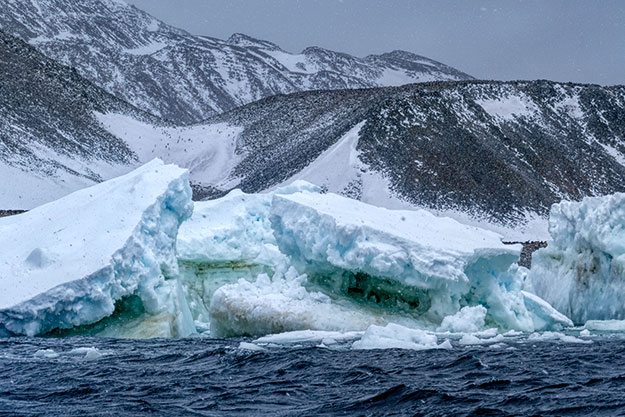
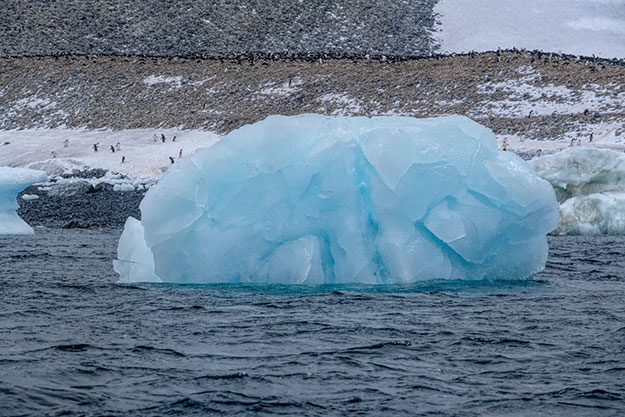
It wouldn’t be the last iceberg I saw, or the largest, but it was the one that impressed me the most. Still today, months later, I can close my eyes and hear the sound of that prehistoric air escaping from the ice. Yet…I am all too aware that this, also is not good news. Earlier this month, The Guardian Newspaper in the UK published a feature story, “The sound of icebergs melting: my journey into the Antarctic.” Seven researchers and scientists set out in a small dinghy in Paradise Harbour. Hoping to listen to the sounds of whales, they were armed with hydrophones, a waterproof microphone used to record underwater sounds. What they heard instead was the sound of icebergs melting. They called it “the sound of climate crisis itself.” The article is a must read. It is one of the most beautifully written pieces I have ever come across. And it includes a recording of the iceberg melting. To me it sounded like water dripping from the rim of a cenote in the Yucatan Peninsula of Mexico (a sinkhole created when a top layer of porous limestone crumbles into a cavern beneath it). I’d be interested to hear your thoughts – what does it sound like to you?
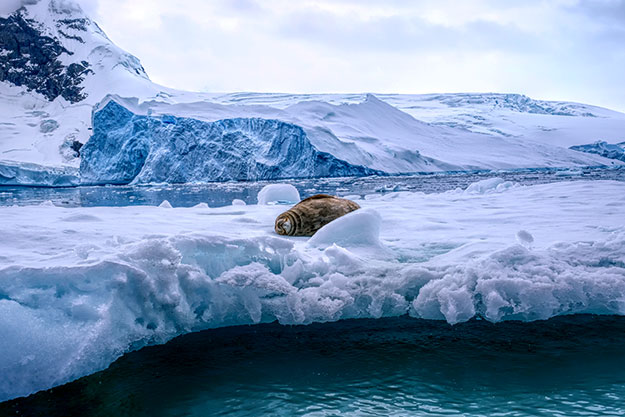
I will always be grateful that I made it to Antarctica while it was relatively pristine and untouched, before uncontrollable snow and ice melt began. But I am devastated to think that this unique place on planet Earth may be on the path to irreversible destruction.

A wonderful and very thought-provoking article! I tend to be optimistic about our environment and the climate because our planet has survived in spite of cataclysmic events/changes over the millennia which took place long before mankind played a major role. That is to say, I’m hopeful for the future of the Antarctic although it may look different at some point. I enjoy all your articles and I especially love all the photos you’ve shared with us from your incredible trip to a part of the world many of us may never get to see in person! Thank you!
Thank you Sylvia. Hope you get there yourself at some point…before the glaciers all melt.
A wonderful report and fantastic pictures of your Antactic experience. It’s the closest that I or many of us will ever get to see of this part of our world. Sad but true, I think. Thank you for sharing it with us.
Thank you so much Betty. I’m so pleased you enjoyed my photos and story, and that I could bring you along as an armchair traveler.
Wow! Those phots are spectacular! I appreciate all of the photos you take and the places you visit. It is a great worry for mankind – our blight on the world is phenomenal. Thanks you for writing so eloquently about all of the places you visit. I visit from my armchair.
And I am so totally indebted to those of you who are armchair travelers and read my stories faithfully! Thank you, as always, for your kind compliments.
Such a nice article. They are sounds is really great. Really it was so awesome article. I have already visited some of these places, good to know there are much more. This is so fascinating. Love this place! Thanks for sharing your information.
You’re very welcome Ravin. I’m pleased you enjoyed reading it.
Simply stunning. You have truly captured the beauty and serenity. It must have been hard to stop taking photos. Thanks for sharing. Mel
Hi Melanie: LOL, you cannot imagine how right you are about not being able to stop taking photos. I have thousands from Antarctica. The biggest problem was keeping the choices down to just a few for the article! Thanks so much for your kind words.
WOW…your photos are absolutely stunning, Barbara! They feel like the viewer is there witnessing the beauty! Fantastic article too!!
Thanks so much Crystal. As always, you are such a good friend and supporter as well.
Barbara, thank you, thank you, thank you, for the blog post and the incredible photos. You have inspired my plans to travel to the Antarctic to photograph the beauty you witnessed with your own eyes.
Again thank your Barbara, for the beauty of your photo-eye.
Thank you for this informative article and the phenomenal photos. I listened to the sound of the glaciers melting. I was shocked that it sounded like running water, not the dripping I had expected. ?
I know! It just stunned me. And that article in the Guardian was a pretty piece of writing, too. Appreciate your comment Linda 🙂
This is one of your best posts ever! And they are all good. The pictures are so professional, so beautiful, s0 other-worldly. Will you please tell us what company you traveled with? It seems you experienced much more than most Anarctic cruisers do.LL
Hi Libbie. Thank you so much! I traveled with Quark, which is an expedition cruise. I’ll be publishing an article soon about the different ways to visit Antarctica and how to get the best prices. I’ll discuss cruise versus fly-cruise itineraries, as well as the difference between expedition semi-expedition, and luxury cruises. I don’t recommend any one company over another, however it is important for people to know what KIND of an Antarctic cruise they want to take before booking. So, keep an eye out for it. Maybe two weeks from now.
This is one of the most moving descriptions of Antarctica I have ever read. You are a keen observer and you were able to see so much. Thanks!
Thank you SO much Kim. Your comment meant a lot to me.
I just read the Guardian article you linked to, how amazing (yet concerning) to hear the sound of an iceberg melting. It sounded like water dripped from the roof of a cave to me. I love all your pictures of icebergs and really want to visit Antarctica one day. After reading that article I know I\’ll be adding to the problems but I still want to go. It could bring a whole new meaning to \’guilt trip\’.